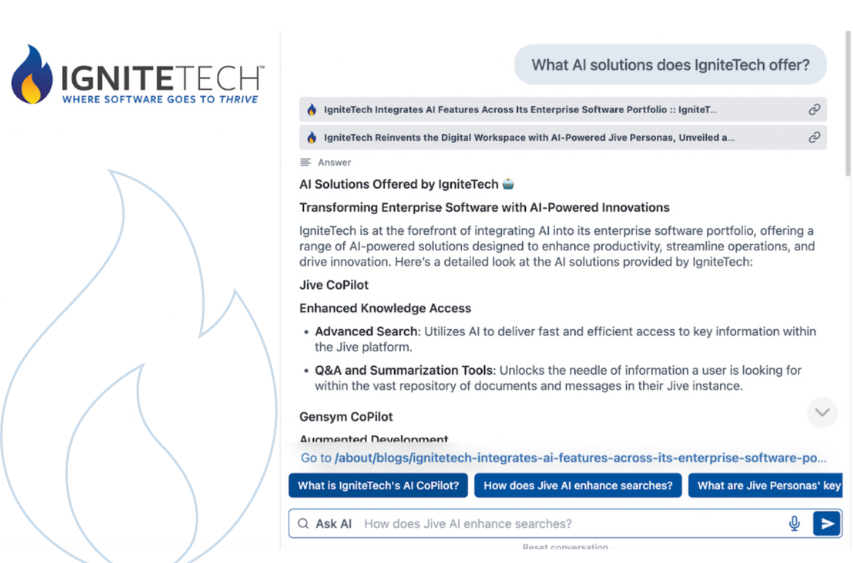Look, we can’t give you a silver bullet for acing client calls. The fact is, nobody likes being sold to, and nobody actually cares about your product. People are only concerned with the problem they’re looking to solve.
So how can knowing that help us do better? The idea is to fundamentally shift the way you approach client engagement.
Here are 5 ways to put that into action.
1. ARRIVE PREPARED
Your call prep should include knowing your product, your prospect, and wider industry trends in-depth. In fact, market research is key to building trust (we’ll talk about that in the next section!). Know that your customers come prepared, too. They can search for answers and solutions on websites, forums, product review sites, social media, messaging platforms, and other channels. When you meet your client in a sales call, you’ll want to assume they already know a lot of information about your product. It’s important to factor that into your conversation, so you don’t end up sharing irrelevant or repetitive information.
Pro Tips
✅ Monitor your pages to see if that client has already reached out to you (could be through Facebook, Twitter, your help desk, etc.). These channels are great information pools for your call prep!
✅ Record contact information and track engagement for each prospect if possible. If you can remember specific interactions, you can also personalize your approach. To amplify your marketing intelligence, use FirstRain, 6sense, or similar tools.
✅ Gather enough information about your prospect from these interactions, so you can clarify their specific concerns. It also shows you’re an insightful person with a piercing eye, which means you’ll offer the best solutions.
2. ESTABLISH AND BUILD TRUST
Just like in any relationship, trust is crucial to your business relationships. It’s an essential element to forging customer loyalty. If your customer trusts your brand, they’ll view you as a trusted advisor, not a salesperson. They’ll also consider each conversation you have with them as a collaborative problem-solving session instead of a sales pitch. It’s going to be easier for you to schedule a client call once you’ve gained that trust.
Now, a big part of trust is knowing the other party. You can’t trust a person or an organization if you completely don’t know them. The same also applies to you: it isn’t enough for your customer to know you. You also have to make them feel like you know them. Doing so will allow you to create an authentic connection, breaking away from the typical sales-y tone.
Pro Tips
✅ Show them that you remember them from their filled info on your website. Have they signed up for a free trial? Did they fill in some personal info in the process? If this is the person contacting you, it helps to build familiarity.
✅ Integrate social media, websites, help desks, and client calls, so you can communicate seamlessly through all channels. That way, your communication with the customer will last outside the client call, showing them that you’re in it for the long haul.
✅ Did your client contact support recently? Show them that you’re aware of any problems they raised there and that you’ve been in touch with those trying to resolve it. The client will then view you as a strong asset to solve their problem, not a telemarketer.
3. ELEVATE THE CUSTOMER EXPERIENCE
Every customer engagement impacts that customer’s overall experience with your brand. When you’re going into a call, treat it as an opportunity to elevate the other party’s customer experience. If your customers have a great experience and find value in client calls, they’ll look forward to these calls. (Okay, maybe ‘looking forward’ is a bit of a stretch, but at the very least, they’ll be more receptive to them.)
In a client call, you don’t have to start solving problems from the get-go. You don’t go straight to the main course, do you? You start with the appetizer and then work your way through the entire meal, right? That’s pretty much what you should also do in your client call prep. Here’s how:
Pro Tips
✅ Humanize the conversation. Make your customer comfortable. You can also talk about family, sports, their dog (works for us!), and anything that piques their interest. This also builds trust! You’re not a robot spitting out information about a service. You’re a person, and people connect. In turn, you’ll be improving your rapport.
✅ Make things easy for your customer in your conversation. Avoid situations where you impose things on them. Rather, give them choices and allow them to choose the best options. In doing so, you show the prospect that you want to help them on their terms, without insisting on what you have.
✅ Don’t overcomplicate things with unnecessary, confusing options. Find a balance between giving options and going into complex, nitty-gritty things. Simplify their decision process as much as you can. That’ll also promote a more comfortable customer experience.
✅ Be mindful of your answers. Don’t refer them to someone else if you can’t answer a specific question. Instead, tell them you’ll find out, and jot down the question. You’ll provide answers as soon as possible after the call. (Plus, this gives you an opportunity to make a concrete promise and deliver on it.)
✅ Surprise and delight your customers with personalized gestures. The only way to do that is if you know them! Don’t throw in random surprises for the sake of it. For example, did you dig around your network and discover your client recently had an achievement or birthday? Why not mention it and celebrate with them?
4. ASK QUESTIONS
A recent study has shown that successful B2B sales calls are characterized by low talk-to-listen ratios. More specifically, calls with the highest yields had a 45:57 ratio. That means you’ll have a greater chance of closing a deal if you tap into the voice of your customer. Simply put, you should let your prospect do most of the talking. How do you get the customer to talk? Now that's the easy part: you ask questions — meaningful questions.
When you let them do the talking, you’ll know more about your customer. That’ll also show your customers that you value what they have to say. More importantly, it’ll enable them to feel more at home in the conversation.
Pro Tips
✅ Know what questions can maximize your engagement. You can ask non-business-related questions at first, but the client call won’t last forever. When you move to business talk, ask about their challenges. Find out if and how you can give them a solution. After all, you’re there to help them with their issues, so you should let them tell you about it. That’ll also show you want to be helpful.
✅ Listen to the answer. You should focus on the ‘talk-to-listen’ ratio, not ‘talk-to-ask’. Don’t be too eager to start talking. In this way, you’ll make the Q&A session an icebreaker and move on with your spiel when the time is right. Understand your prospect’s perspective, so you get the right context and give insightful answers. The client will then see you want to help them specifically, through any means possible.
✅ Ask them ‘Can I help you with anything else?’. In doing so, you’ll ensure you’ve covered everything your customer wanted to discuss. It also shows them that you’re willing to go the extra mile for them. In turn, they’ll feel like you’re really there to help, not pitch a product, follow a script, and bounce.
5. TIE UP LOOSE ENDS
The end of a call shouldn’t mark the end of that particular engagement. And you definitely don’t want to leave anyone hanging. You can quickly address these points with an email that contains the following key elements (in this order!):
✅ Say thanks. Time is gold, so definitely thank the other person for taking their time to talk with you. They didn’t have to.
✅ Summarize your conversation. This will give the other person something to refer to in case they need to review it or want to share their conversation with a higher-up. It’s also considerate in case the person you were talking with forgot any key points. They will appreciate your follow-up.
✅ Answer any unanswered questions. Do you remember instances in the call when you didn’t have an answer to a particular question and promised to get back? If you already have the answer, include it here. If not, don’t be afraid to mention it, but give the other person assurance that you haven’t forgotten. Doing so will give the other person the impression that you’re the kind of person who sticks to your word. In other words — you’re honest, reliable, and professional.
✅ Add more helpful information. Take this opportunity to include additional information that you may have failed to discuss, but that can help them solve their problem. This may or may not be related to your product or service. In any case, you’re adding value. Doing so will only enhance your prospect or customer’s impression of you. Caution: read the room. Don’t go overboard on unsolicited advice. Know the limit, or excessive helpfulness could have adverse impacts.
✅ Set a reminder for the next meeting: If you had already agreed on this, you can remind them of the schedule of your next call. If you haven’t, go ahead and propose a time and date for a follow up meeting. In either case, you’ll come across as well-organized and thoughtful — and again, helpful.
FINAL WORDS
Prospects and customers have a natural aversion to client calls. It’s a byproduct of the age-old practice of making sales the central theme of a call. You can change that, though! All you need to do is ensure your prospects and customers perceive your calls as a genuine effort to help them solve their problems — not merely as a means to meeting your quota. Here, we’ve shared our top 5 suggestions for helping you with your client call prep. That should allow you to flip the switch and change the narrative so you can ace any client call.






